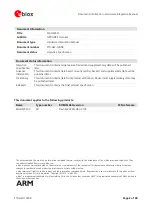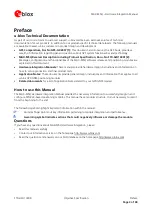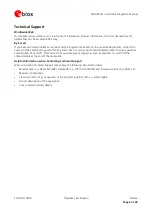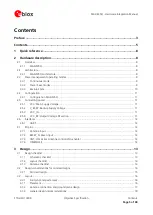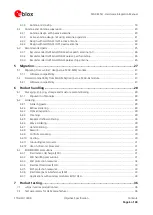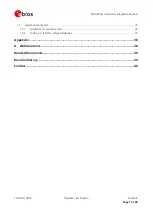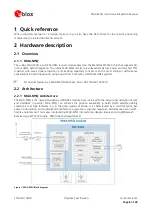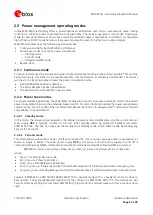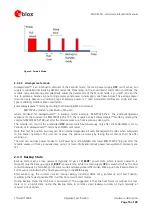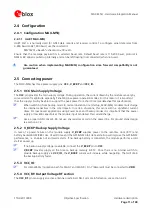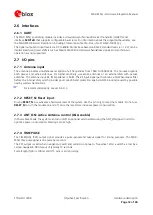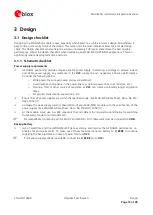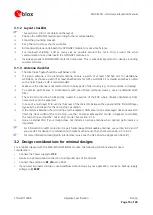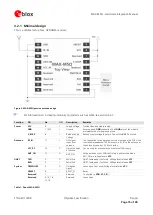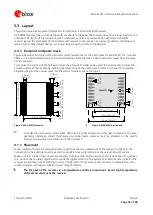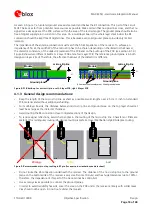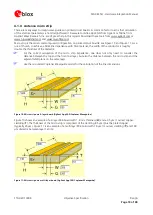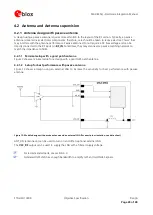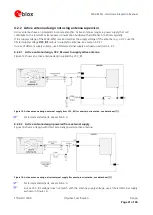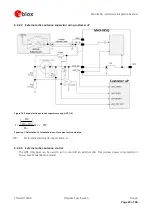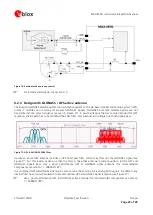
MAX-M5Q - Hardware Integration Manual
FTX-HW-13008
Objective Specification
Hardware description
Page 10 of 40
Figure 2: Periodic Mode
2.3.2.3
AlwaysLocate mode
AlwaysLocate™ is an intelligent controller of the Periodic mode; the main power supply
VCC
is still active, but
supply is controlled internally by NMEA commands. Depending on the environment and motion conditions, the
module can autonomously and adaptively adjust the parameters of the Periodic mode, e.g. on/off ratio and fix
rate to achieve a balance in positioning accuracy and power consumption, see figure below. The average power
drain can vary based on conditions; typical average power is 7 mW. Associated profiles are: High and Low
Speed, Walking, Outdoor Static and Indoor.
Enter AlwaysLocate™ mode by sending the following NMEA command:
$PMTK225,<mode>*<checksum><CR><LF>
where mode=9 for AlwaysLocate™ in Backup mode. Example: $PMTK225,9*22. The acknowledgement
response for the command is $PMTK001,225,3*35. The module can exit AlwaysLocate™ mode by sending the
command $PMTK225,0*2B just after the module wakes up from a previous sleep cycle.
The module can control the embedded
VCC
power switch autonomously only after the MAX-M5Q is set to
Periodic or to AlwaysLocate™ mode by an NMEA command.
Note that first fix position accuracy can be somewhat degraded in Power Management modes when compared
to Full Power operation. The user can improve the position accuracy by taking the second or third fix after
waking up.
The user can exit low power modes to Full Power by sending NMEA command $PMTK225,0*2B just after the
module wakes up from a previous sleep cycle. For more information about power management command, see
[2].
2.3.3
Backup State
Backup State means a low quiescent (typically 10
μ
A at
V_BCKP
) power state where receiver operation is
stopped; only the backup supply
V_BCKP
is powered on while the main supply
VCC
is switched off by the host
(or autonomously by MAX-M5Q in Periodic mode and AlwaysLocateTM mode). Waking up from Backup State to
Full Power is controlled by the host by switching on the
VCC
supply.
After waking up, the receiver uses all internal aiding, including GNSS time, Ephemeris, and Last Position,
resulting in the fastest possible TTFF in either hot or warm start modes.
During Backup State, the I/O block is powered off. The suggestion is that the host forces its outputs to a low
state or to a high-Z state during the Backup State to minimize small leakage currents (<10
μ
A typically) at
receiver’s input signals.


